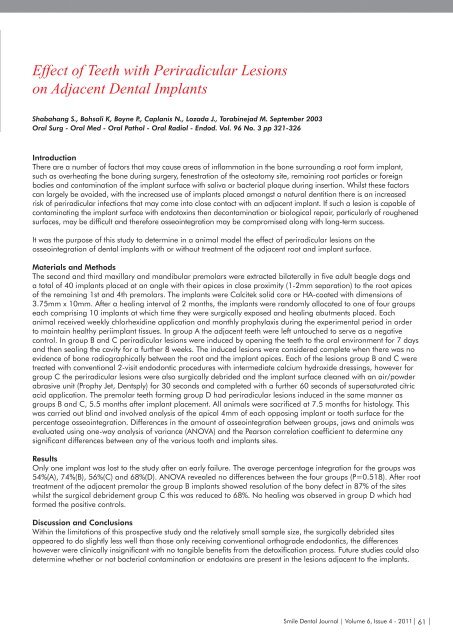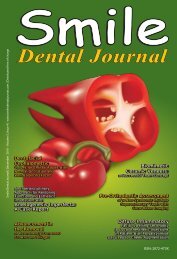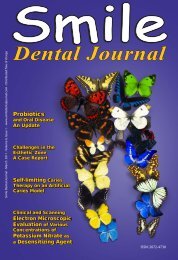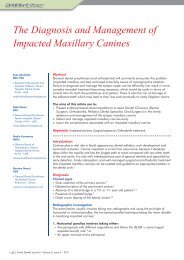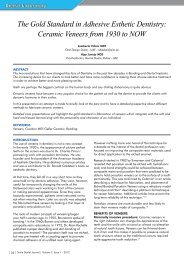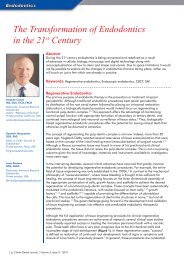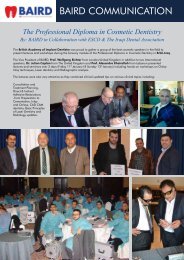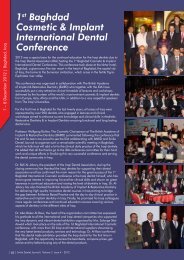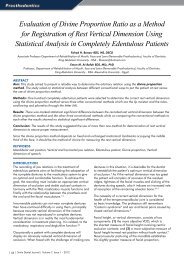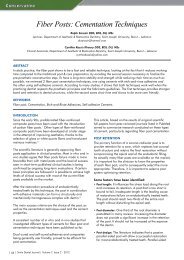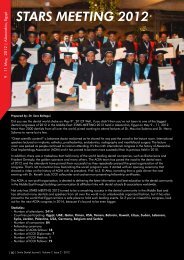Download e-copy - Smile Dental Journal
Download e-copy - Smile Dental Journal
Download e-copy - Smile Dental Journal
You also want an ePaper? Increase the reach of your titles
YUMPU automatically turns print PDFs into web optimized ePapers that Google loves.
(Fig. 12) Facial view of<br />
patient I. before treatment<br />
(Fig. 16) Facial view of<br />
patient I. after treatment<br />
(Fig. 13) Retracted view before treatment<br />
(Fig. 17) Retracted view after treatment<br />
(Fig. 14) Retracted view<br />
of left side occlusion before<br />
treatment<br />
(Fig. 18) Retracted view<br />
of left side occlusion after<br />
treatment<br />
(Fig. 15) Maxillary models before and after orthodontic phase<br />
of treatment<br />
is creating proper relationships inside TMJ, subsequently<br />
eliminating the majority of TMJ issues.<br />
a dentofacial orthopedics approach regardless of age<br />
of the patient. The changes undergone by patient’s<br />
faces, the size of the jaws and the occlusion and teeth<br />
position cannot be explained by simple tooth movement<br />
but rather by response of the alveolar bone as a<br />
“whole”. Orthopedic changes in patient’s jaws and<br />
their relationships are generally responsible for overall<br />
improvement in facial appearance, correlations of the<br />
condyles and discs inside TMJ and the creation of much<br />
better groundwork for subsequent restorative procedures.<br />
The scientific evidence for the new dentofacial orthopedic<br />
approach is coming from work of Melsen, 9,10 and<br />
Cacciafesta, 11 who advocate that the dentoalveolar<br />
complex is much more malleable than previously believed.<br />
Michael O. Williams and Neal C. Murphy have introduced<br />
the concept of “whole bone” perspective to the alveolar<br />
bone response to continuous low orthopedic force. 12<br />
The cases presented in this article show that the<br />
remodeling and redevelopment of the patient’s facial<br />
and dentoalveolar structures can be performed using<br />
(Fig. 19) Patient’s O. CT scan: maxillary transverse view after<br />
treatment<br />
<strong>Smile</strong> <strong>Dental</strong> <strong>Journal</strong> | Volume 6, Issue 4 - 2011| 29 |


